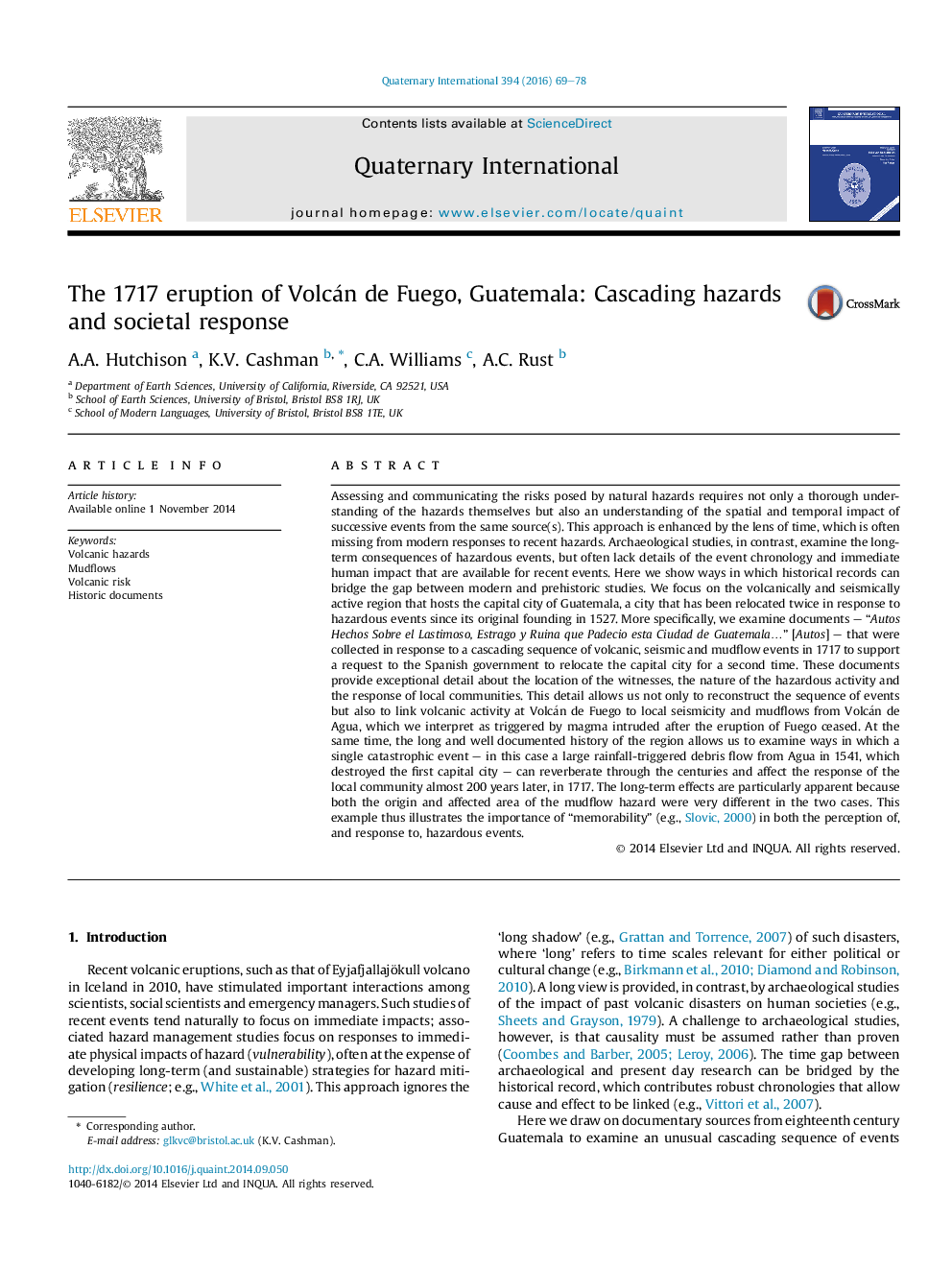| کد مقاله | کد نشریه | سال انتشار | مقاله انگلیسی | نسخه تمام متن |
|---|---|---|---|---|
| 1040307 | 1484104 | 2016 | 10 صفحه PDF | دانلود رایگان |
Assessing and communicating the risks posed by natural hazards requires not only a thorough understanding of the hazards themselves but also an understanding of the spatial and temporal impact of successive events from the same source(s). This approach is enhanced by the lens of time, which is often missing from modern responses to recent hazards. Archaeological studies, in contrast, examine the long-term consequences of hazardous events, but often lack details of the event chronology and immediate human impact that are available for recent events. Here we show ways in which historical records can bridge the gap between modern and prehistoric studies. We focus on the volcanically and seismically active region that hosts the capital city of Guatemala, a city that has been relocated twice in response to hazardous events since its original founding in 1527. More specifically, we examine documents – “Autos Hechos Sobre el Lastimoso, Estrago y Ruina que Padecio esta Ciudad de Guatemala…” [Autos] – that were collected in response to a cascading sequence of volcanic, seismic and mudflow events in 1717 to support a request to the Spanish government to relocate the capital city for a second time. These documents provide exceptional detail about the location of the witnesses, the nature of the hazardous activity and the response of local communities. This detail allows us not only to reconstruct the sequence of events but also to link volcanic activity at Volcán de Fuego to local seismicity and mudflows from Volcán de Agua, which we interpret as triggered by magma intruded after the eruption of Fuego ceased. At the same time, the long and well documented history of the region allows us to examine ways in which a single catastrophic event – in this case a large rainfall-triggered debris flow from Agua in 1541, which destroyed the first capital city – can reverberate through the centuries and affect the response of the local community almost 200 years later, in 1717. The long-term effects are particularly apparent because both the origin and affected area of the mudflow hazard were very different in the two cases. This example thus illustrates the importance of “memorability” (e.g., Slovic, 2000) in both the perception of, and response to, hazardous events.
Journal: Quaternary International - Volume 394, 11 February 2016, Pages 69–78
